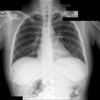
"Build Google Medicine. The benefits to human health would be immeasurable."
British Medical Journal Editorial by Dean Giustini, BMJ 2005;331:1487-1488 (24 December)
The article is very interesting and I would tell you, just like Instapundit, "read the whole thing", not just the title.
User-created contentOur information world is changing and becoming broader every day. Anybody who has knowledge and interesting ideas can contribute. The Internet was created with the idea for free contribution but that was not easy to implement until the blogging tools circumvented the need to know HTML to make a professional website.
Tim Berners-Lee, the inventor of the internet, explains that the very first browser was able to do the same thing that blogs and wiki enable you to do now - to make and save changes on the web pages.
It takes 5 minutes to make a website on Google's Blogger.com and it is easier than email. All this information created by millions of users every day is easily searchable and updated at the same moment as you are reading this. The world never sleeps.
When I made my first website for the Case Western Reserve University (St. Vincent/St. Lukes) residency program, the motto was "
for the residents, by the residents". The users (medical residents) loved the fact that they can request a feature (e.g. "how can I recognize the correct position of endotracheal tube on CXR?") and see it posted on
their own website the same afternoon.
Two years and nine websites later, I can tell you from my limited experience:
user-created content has a future. If you cannot find the information you are looking for, may be it is time to write it yourself. Research the question in Pubmed and the major journals, consult colleagues and write it down on your website. Somebody may find it useful.
Search is the kingGoogle often beats
UpToDate in finding what you are looking for. UpToDate information is far more reliable but Google is much broader.
Just see
who brings visitors to BMJ website, Google leads it closest competitor by a multiple of nine (450,000 as compared to 50,000). Many young people believe that "if something is not on Google, it just doesn't exist." User-created content often tops the search results and most people never look beyond the first ten results on the page. There are dangers of seeing the world through "Google eyes" but this is a topic for another discussion.
Our patients use the search engines all the time, we, as physicians, cannot lag far behind. Of course, there are credibility problems to be solved but may be one day Google (or somebody else) will really be able to "organize the world's information and make it universally accessible."
My small contributionI feel humbled to be
cited twice in the BMJ editorial in the same group with the
New England Journal of Medicine,
Canadian Medical Association Journal and
Academic Medicine.
Our projects include:
-
Clinical Cases and Images. A Case-Based Curriculum of Clinical Medicine. This project is supported by physicians in the Section of Hospital Medicine at the Cleveland Clinic and the Case Western Reserve University (St. Vincent/St. Lukes) Internal Medicine Residency Program. ClinicalCases.org was
featured in BMJ.
-
Procedure Skills collects slide shows with explanations of some common medical procedures like central line placement and thoracentesis. The procedure articles are
referenced in Wikipedia, the world's largest online encyclopedia.
- Clinical Cases and Images - Blog.
Casesblog features daily news, comments and ideas which have not reached the stage of completeness to be published on ClinicalCases.org.
-
Clinical Notes collects information which is not related to clinical cases but represents practice tools, for example,
Sample Admission Notes for the Most Common Conditions and
A Systematic Approach to Reading an EKG.
-
Computers and Internet is a website that collects the information technology stories from Casesblog relevant to medical practice.
-
Hit the Road - See America and the World features photos and descriptions of interesting places to visit around Cleveland, Ohio and around the world.
Update 3/28/2007:Adam Bosworth, Vice President of Engineering at Google Inc. covers similar topics in:
How do you know you're getting the best care possible? References:How Google is changing medicine - BMJ 12/05 (
extract). Dean Giustini's
blogSearching for the Right Search — Reaching the Medical Literature - NEJM 1/06
Google Medicine and open access: team players in knowledge-based healthcare (PDF)- Dean Giustini
So I have a blog - Tim Berners-Lee
Podcast May Be the Word of the Year, But Google Has Changed Medicine - KraftyLibrarian.blogspot.com
Web Search 101: Walt Mossberg, the world's best tech writer, offers a free introductory course - BookOfJoe.
Google Hires Physician - For Google Medicine? UBC Google Scholar Blog.
Wikis, blogs and podcasts: a new generation of web-based tools for virtual collaborative clinical practice and education. Boulos MNK, Maramba I, Wheeler S. BMC Med Educ 2006;6:41.
Image source: Doctors Using Google by Philipp Lenssen, used with permission



































